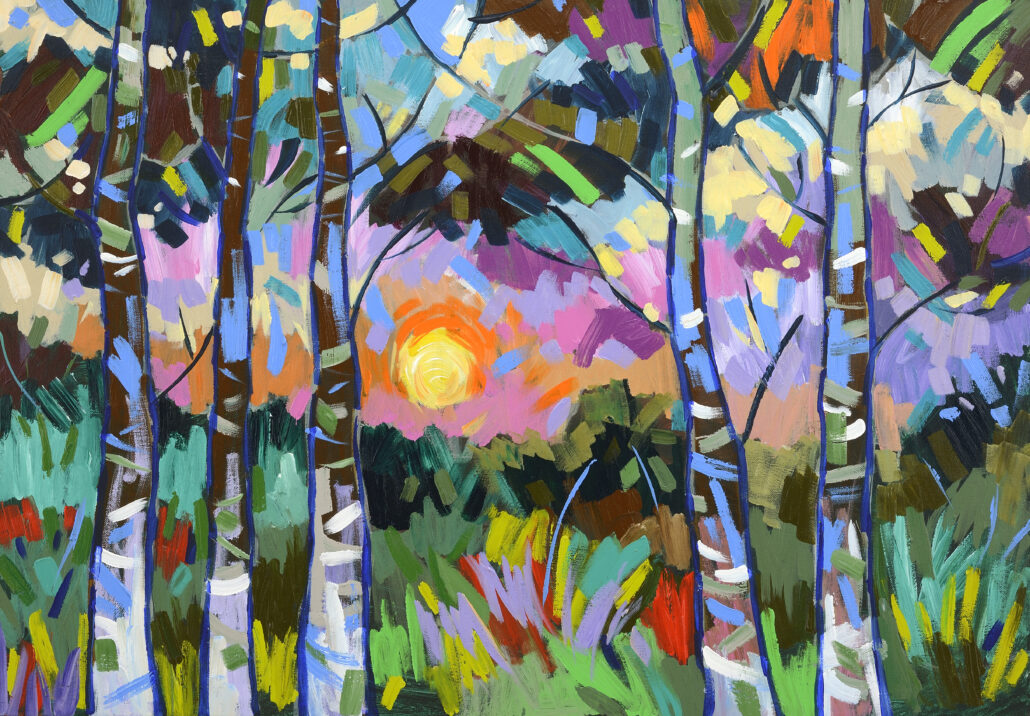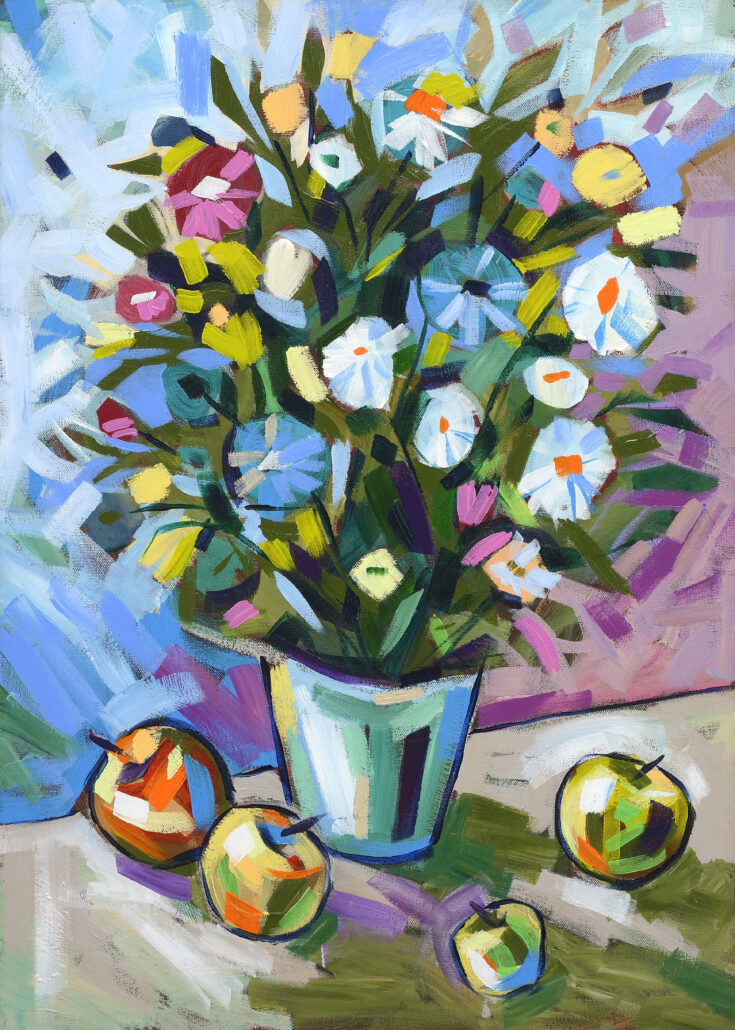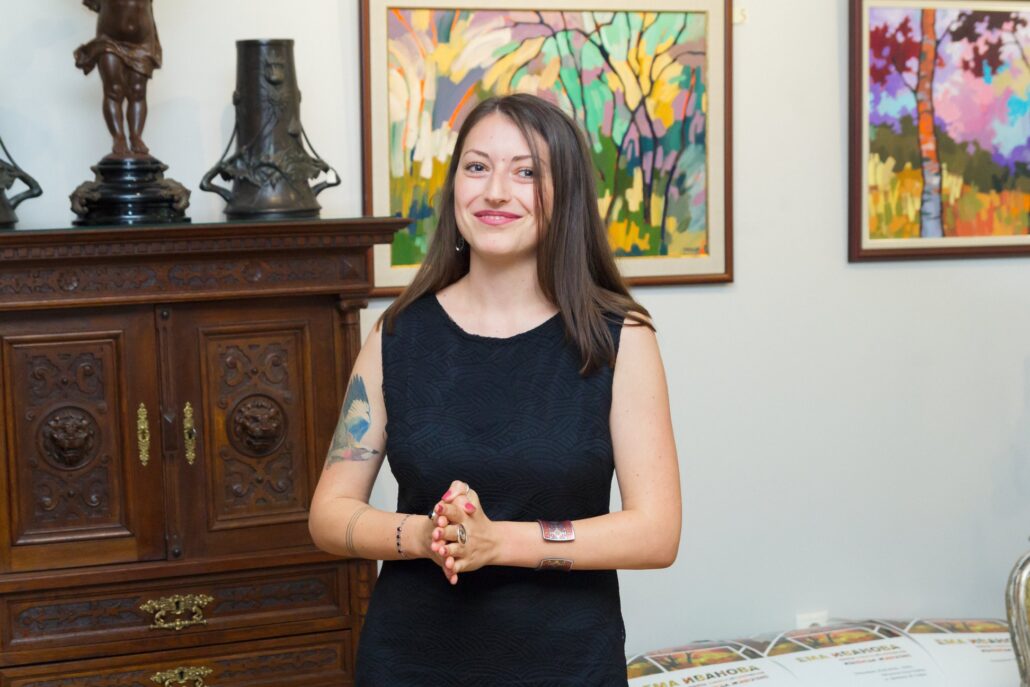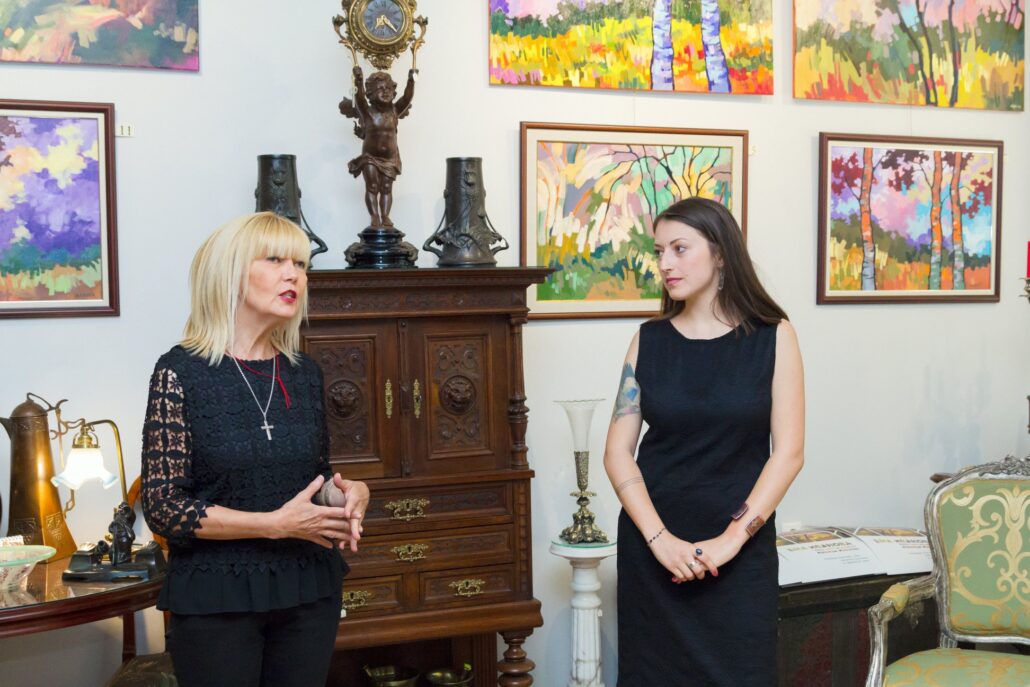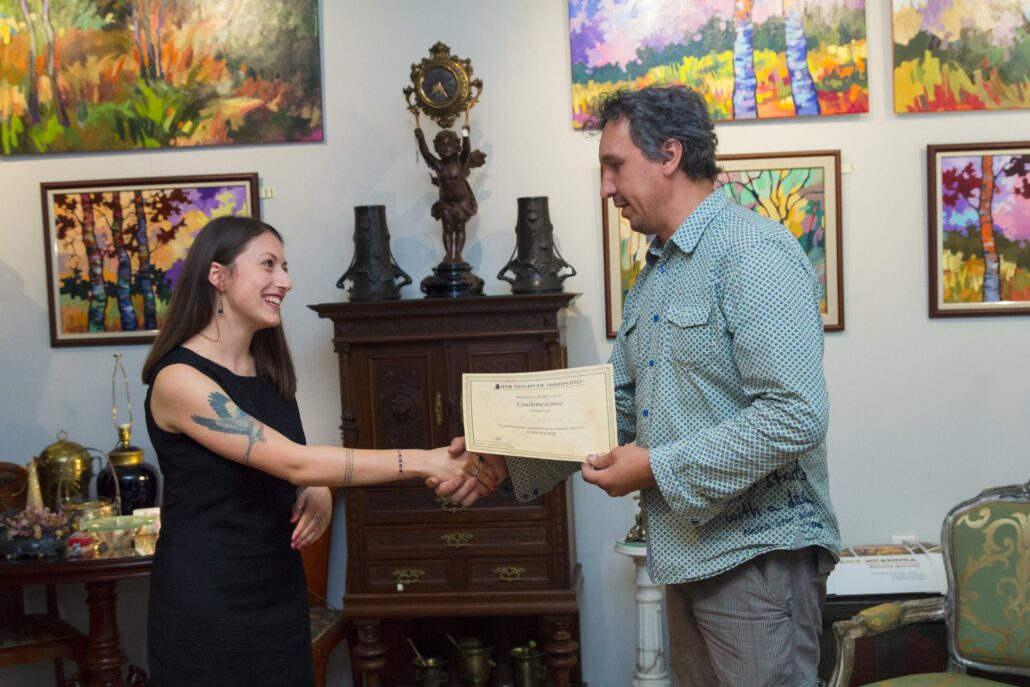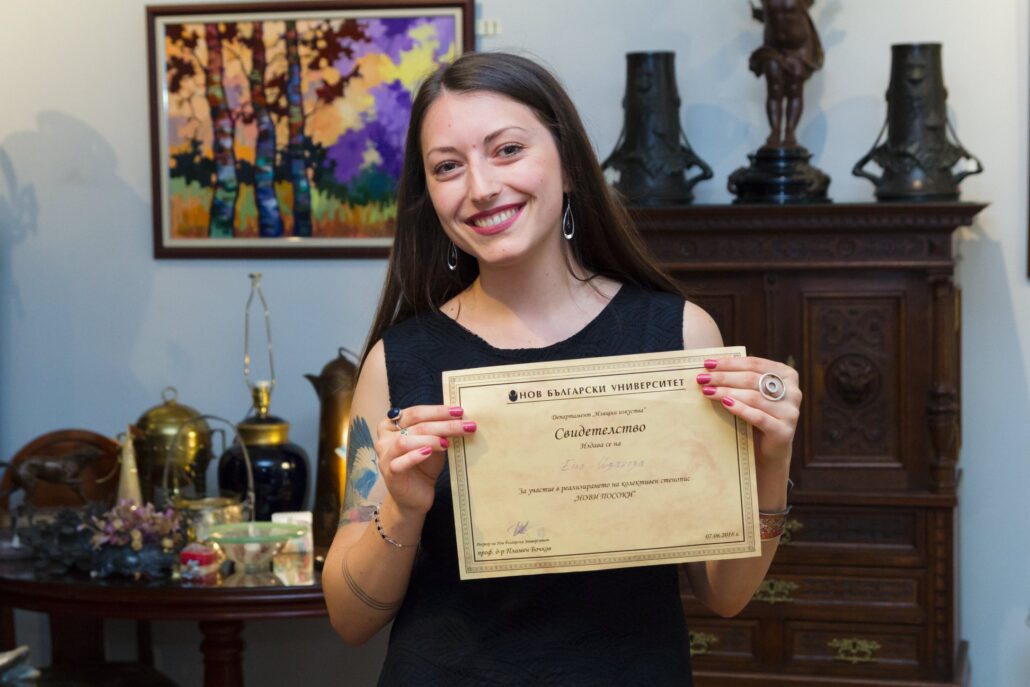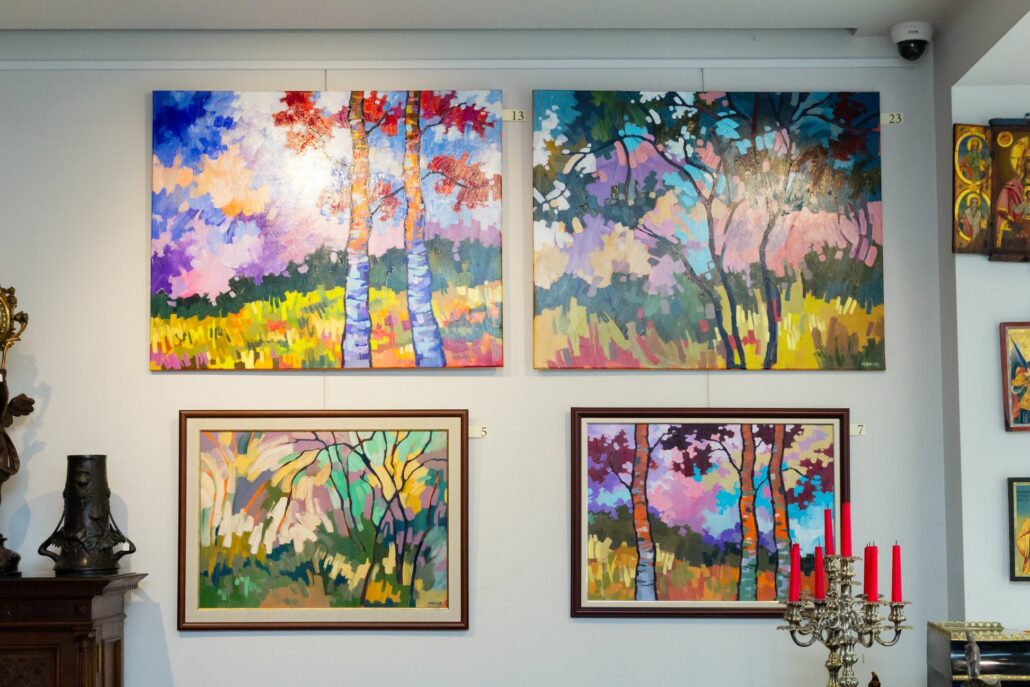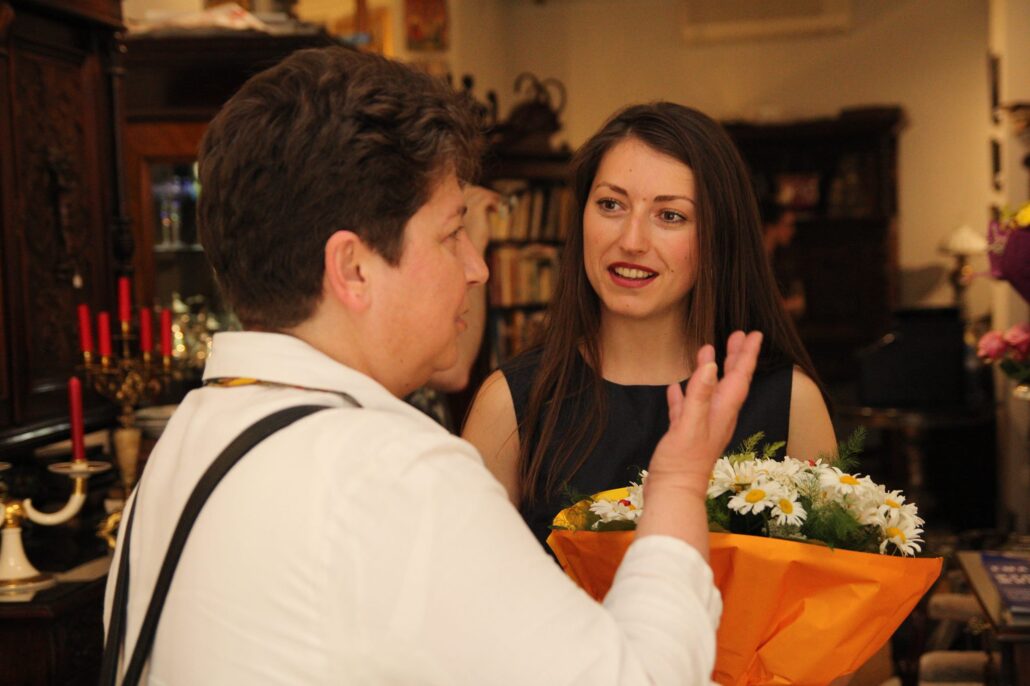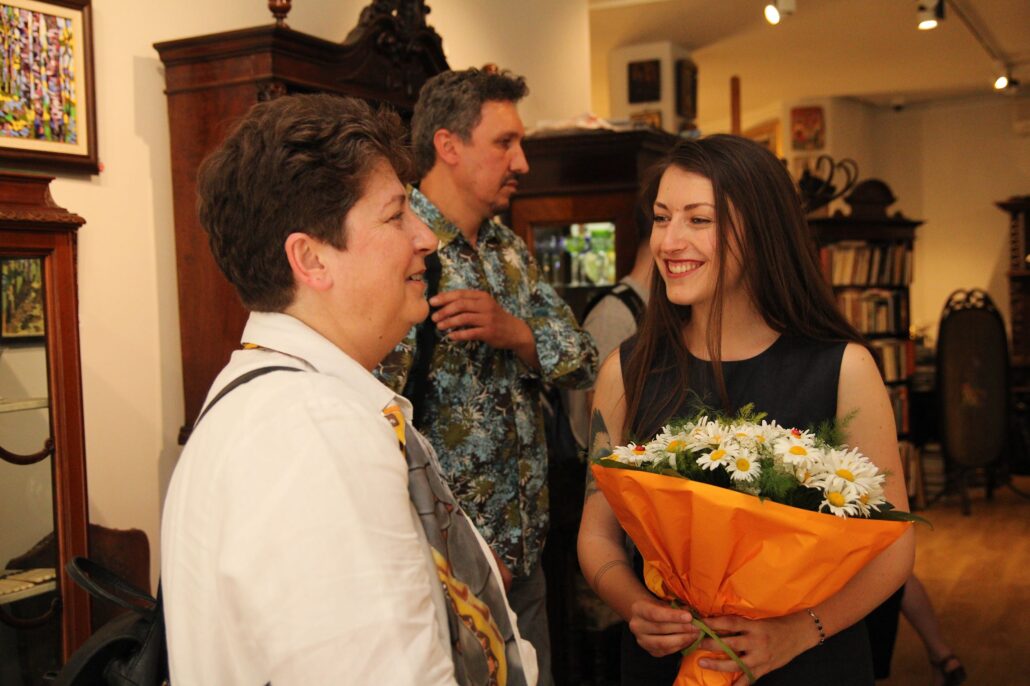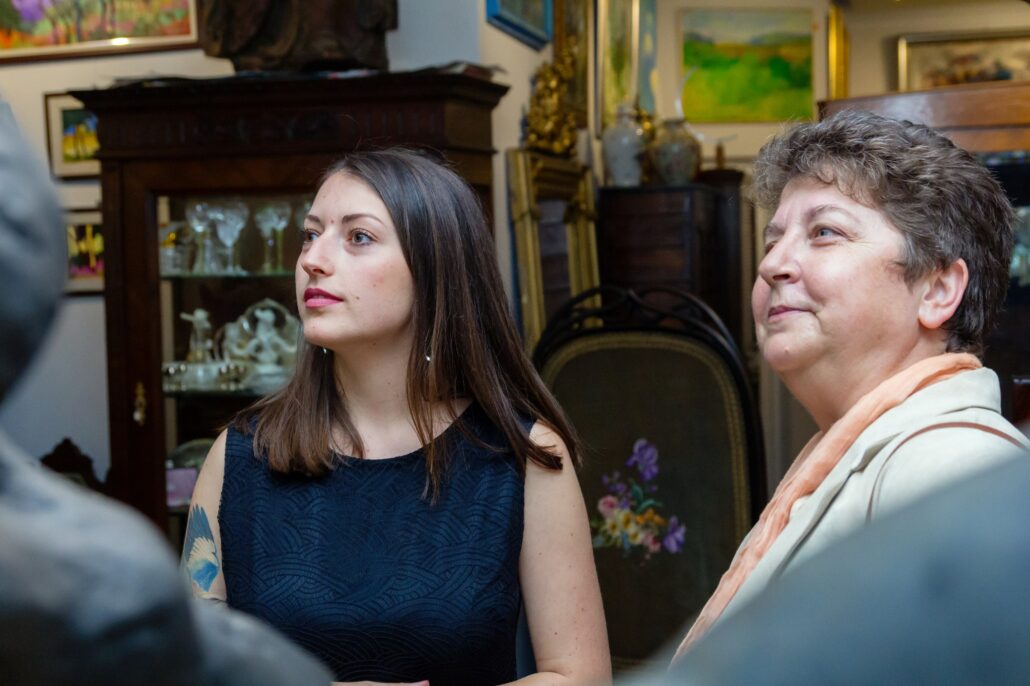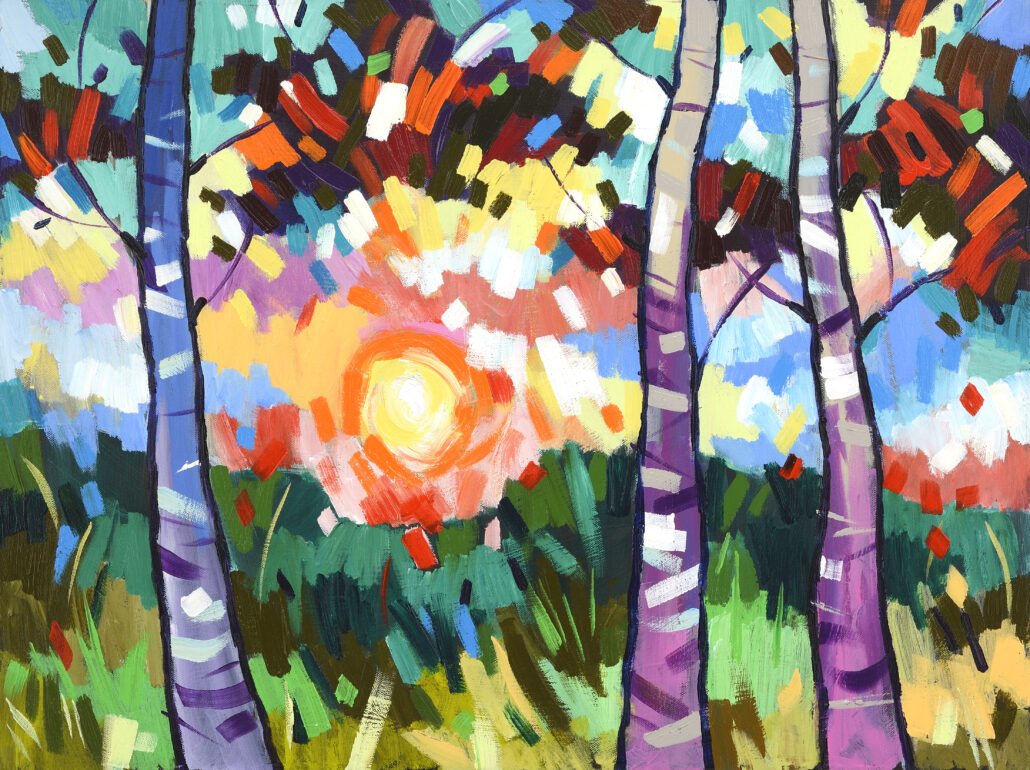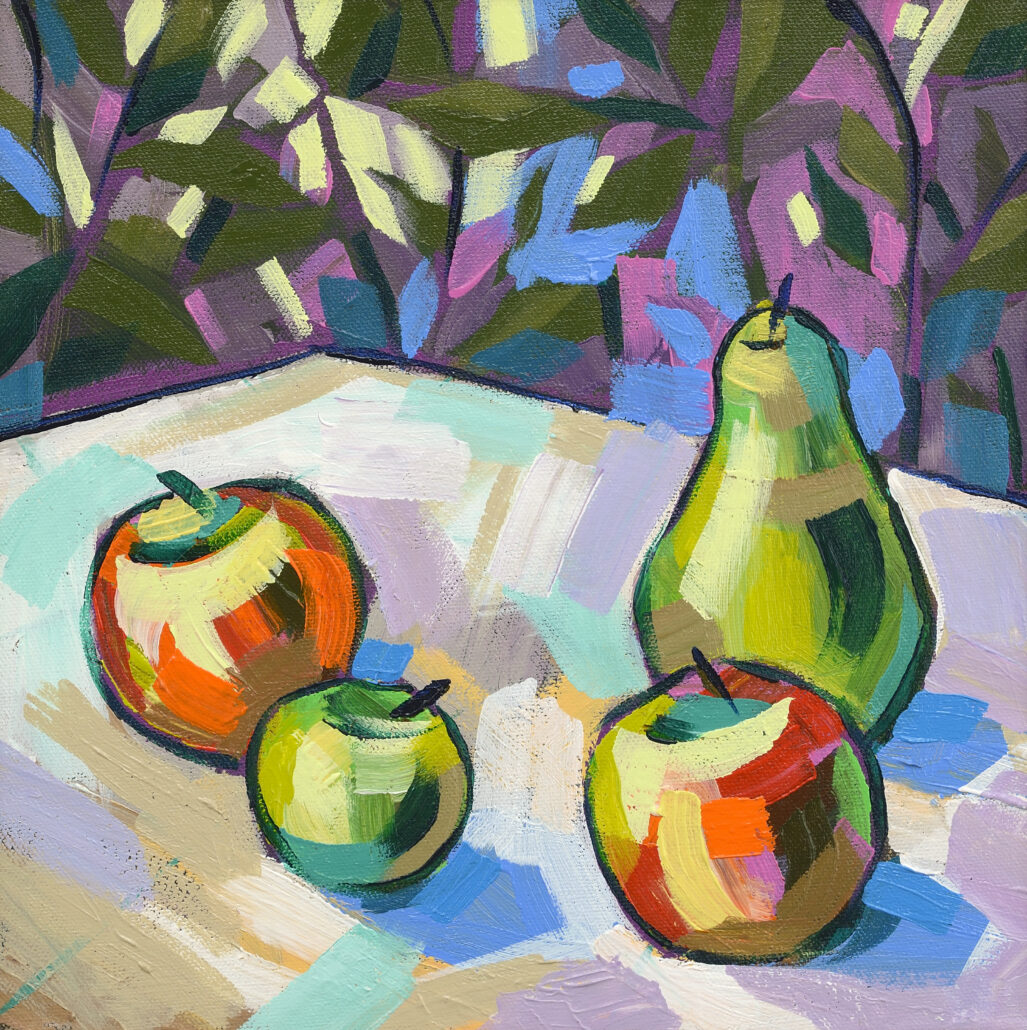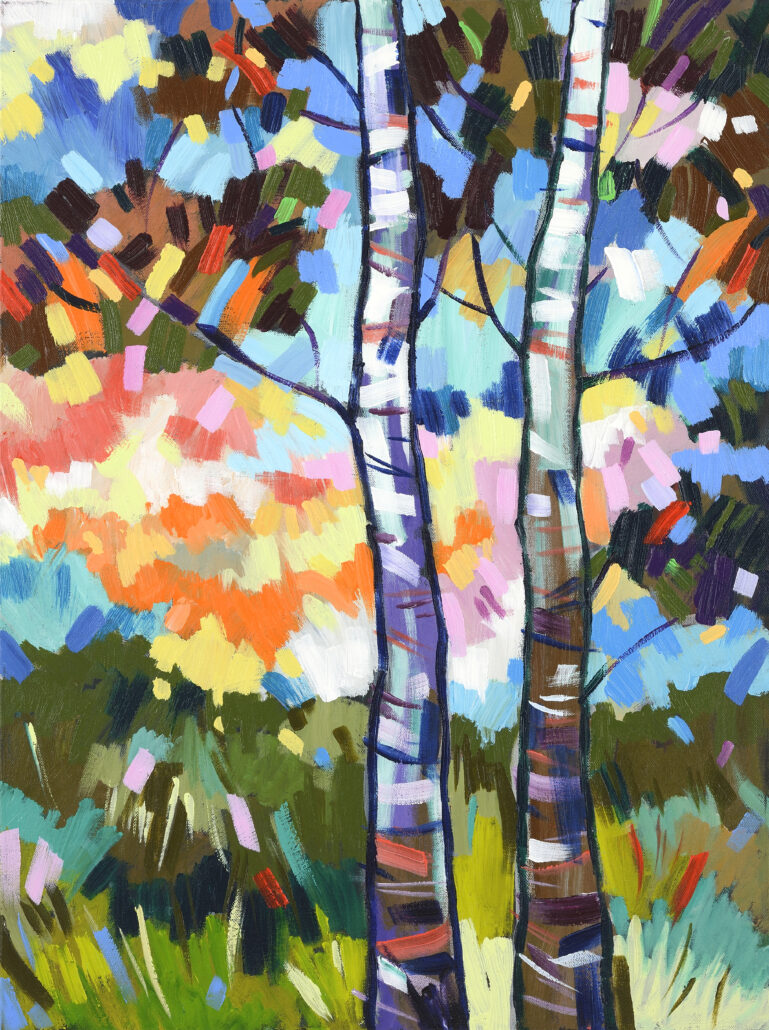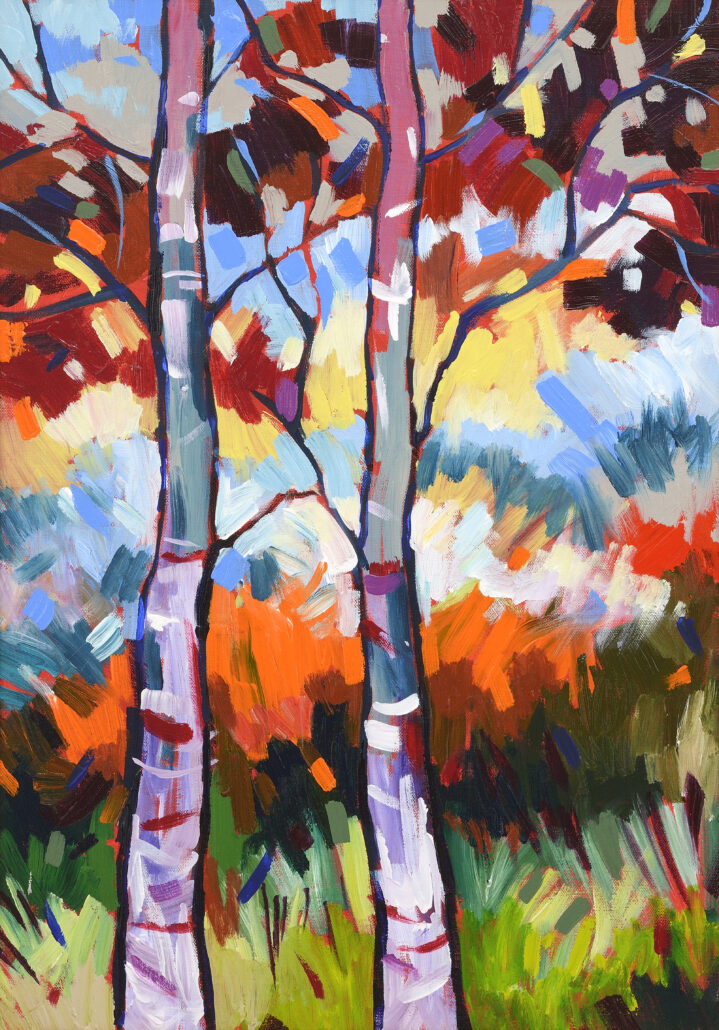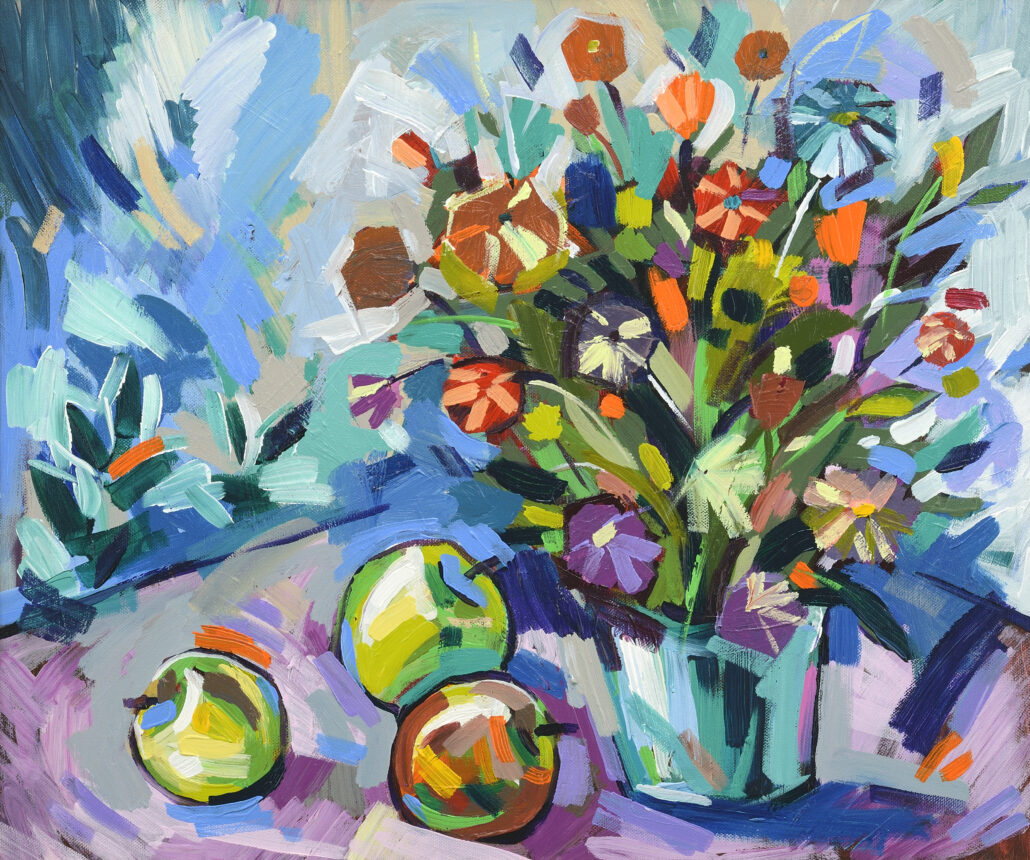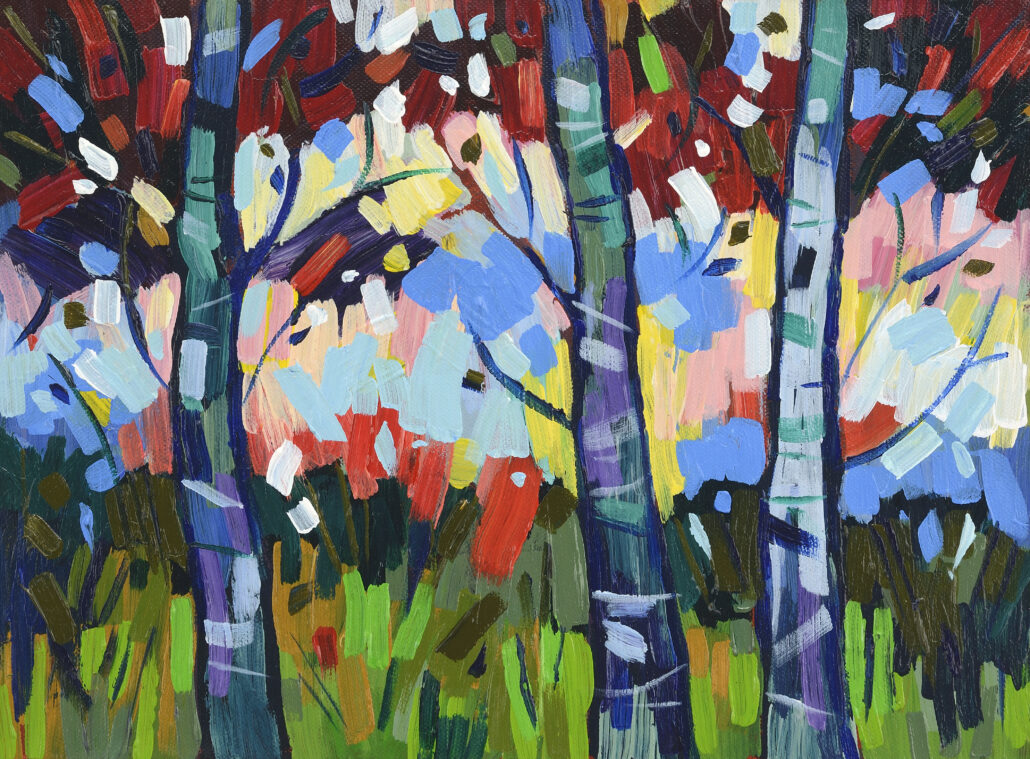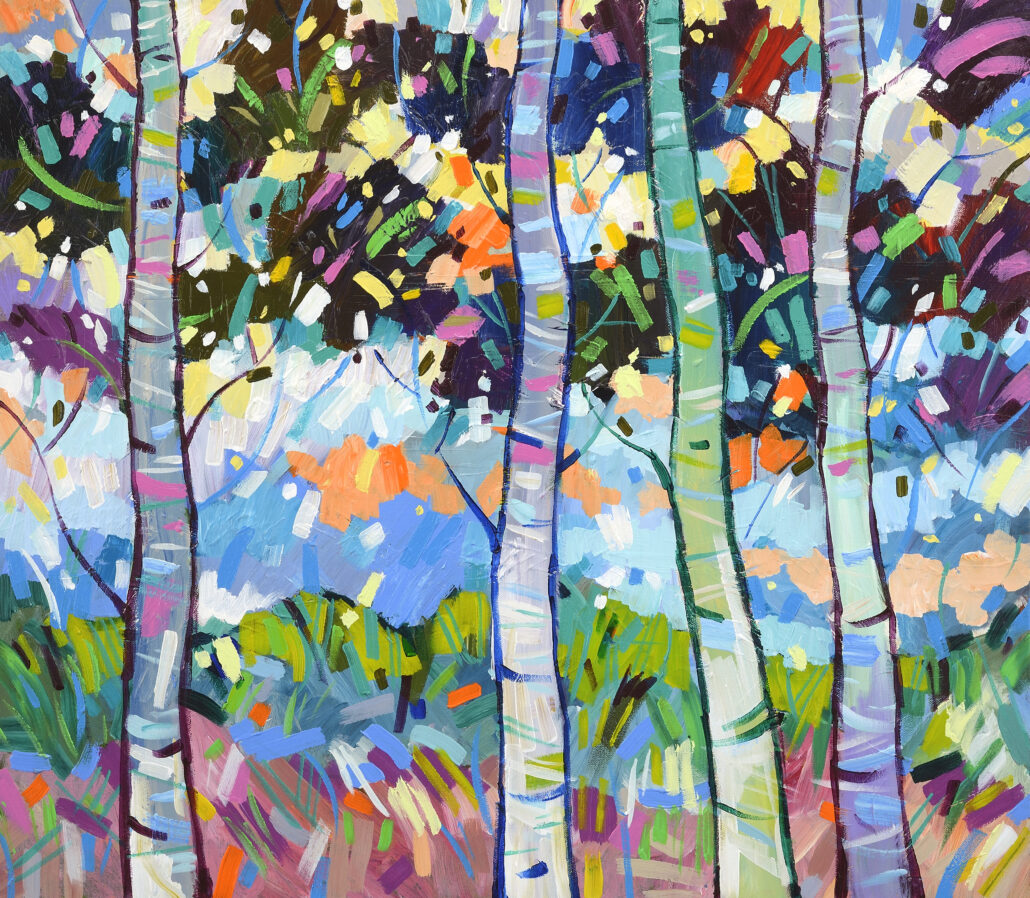Exhibition of paintings at Enakor Auction House, 21-29 March 2024.
Curator Rossitsa Gicheva-Meimari
For years, Enakor Auction House has been working on one of its missions – to provide a space for exhibitions of contemporary and especially young artists who have somehow connected their work with us. Most often, these are students of Art History at the New Bulgarian University, who in the last ten years have been doing practice or internships at Enakor. Ema Yordanova is the most active young artist whose work we exhibit and sell – on 21 March 2024 we are opening her third solo exhibition with us (the first two were in 2017 and 2018). Apart from the exhibitions, her paintings have participated in our auctions many times – she has her connoisseurs who always buy her paintings.
Photos from the exhibitions at Enakor with Julia Varbanova and guests
Photos from the exhibitions at Enakor with her teacher in painting Stanimir Bozhilov
Biographical data
Ema Yordanova was born on December 9, 1994 in Rousse. In 2013, she graduated from “Baba Tonka” Mathematical High School in the same town. There she learned the basics of drawing from her teachers Vyara Gouneva and Georgi Passev, who guided and encouraged her to follow the path of an artist. In 2014, she completed a preparatory year of the Foundation Diploma in Art and Design at Coventry University, UK, but then had to return to Bulgaria. In 2016-2019, she studied in the BA History of Art and Art Management programme and the Minor in Painting and Mural Art at New Bulgarian University, Sofia. Her mentor in the Minor program is prof. Nikolay Maystorov, and her lecturers are Stanimir Bozhilov and Assoc. Prof. Dr. Ralitsa Mircheva. She graduated as an art historian under the scientific supervision of Rossitsa Gicheva-Meimari Ph.D. The topic of her bachelor thesis “Iconography of the Hellenic Dionysus in pre-Roman Thrace in the Bulgarian lands” was defended with excellence. Currently she is a freelance artist in the field of painting and drawing. Here is what Ema says about her time studying and her teachers in the art department at NBU: “I am eternally grateful to everyone for the efforts they made so that I could find myself and improve as an artist. This schooling was necessary to build a solid foundation that I could then build upon. In addition to classical tools and techniques, I was also able to master the ability to experiment. The most valuable skills I built that I am now becoming aware of are being able to observe, to see, to project in my mind, to visualize something that does not currently exist, and the freedom to express my ideas and desires creatively.“
Ema Yordanova at the openings of her two previous solo exhibitions at Enakor Auction House, with her teachers in painting – Stanimir Bozhilov and in art history – Rossitsa Gicheva-Meimari
As a lecturer in the Art History programs at New Bulgarian University and as the supervisor of Ema’s thesis, I know her much more as a student of Art History. That is why I was interested to ask her (in the interview I conducted with her) why she made these unusual choices for an artist: ‘Why did you enroll in the Art History program at NBU, what did your studies there give you? And also why did you choose art from the ancient era as the topic of your thesis?”
“The Art History program at NBU was a logical choice for me and managed to give me a theoretical and analytical base that I was able to combine well at the same time with my practical education in drawing and painting. This way I was able to extract the most useful things for me and get a complete education. I chose Antiquity as a subject because this period of Art History is so remote and that is why it is extremely interesting. If I could travel back in time, I would meet ancient Greek sculptors or Thracian masters of metalwork; we would look up at the starry sky and drink nice undiluted wine.”
Although quite young, Yordanova is well known to the public and has many exhibitions behind her – both solo and group exhibitions. Here are some of the more important ones.
Selected solo exhibitions
2023 – Solo exhibition “Colour Shades”, Arcana Art Club, Sozopol
2018 – Solo exhibition of painting, Enakor Auction House, Sofia
2017 – Solo exhibition of paintings and drawings, Enakor Auction House, Sofia
2016 – Solo Exhibition “Dialogues”, Buddha House Cultural Centre, Ruse
2016 – Solo exhibition “Impressions”, Representation of the European Commission in Bulgaria, Sofia
2016 – Solo exhibition “Debut”, New Bulgarian University, Sofia
Selected general and collective exhibitions
2019 – Student exhibition “Koukers”, NBU, Sofia
2018 – “Colours of Autumn”, DSH Gallery, Sofia
2018 – “Let It Be Summer”, DSH Gallery, Sofia
2018 – “Graphic Design – Painting Minor”, NBU, Sofia
2018 – “Drawings and Painting”, NBU, Sofia
2017 – “Ten”, Lyuben Gaydarov Gallery, Pernik
2017 – Student Exhibition, Lyuben Gaydarov Gallery, Pernik
2016 – “From Drawing to Painting”, NBU, Sofia
What Ema Yordanova tells about her creative work
In my interview with Ema, I asked various questions about her formation, choices of materials, themes, subjects, and way of working. I present the more interesting parts of her answers.
RG: What have you adopted from your teachers? Which artists are your favourites and how do they influence you?
EY: “Thanks to prof. Nikolai Maystorov I gained experience in building figurative compositions, learned more complex work with colour and also found the courage to work on a large format, which eventually became a real pleasure. Stanimir Bozhilov helped me to learn the specifics of drawing and introduced me to other areas such as stained glass and mosaic. My favourite artists to draw inspiration from are the Impressionists and specifically Monet, Cézanne, Van Gogh and Gauguin. Bulgarian artists who have influenced me a lot are Genko Genkov, Atanas Yaranov, and Vladimir Dimitrov-Maystora. Contemporary world famous artists I admire are Andrew Salgado, Robert Moore and many others.“
RG: Why do you paint at all (except for a living)? What does painting give you? How does it change you?
EY: “Drawing for me is a necessity of life – like breathing. The energy that forms when I draw is unparalleled. It is hard to describe this energy in words, it is something invisible, and it is felt with the soul. It is not just a way of expressing oneself, but something great. When I pick up the brushes, the palette and stand in front of the easel, it is as if I cross the threshold of another world, time stretches, another music starts to play and it is as if something swirls and I become a conductor. Then everything falls into place and makes sense. That is when I too find my place. Observing daily not only nature but also people, I try to draw inspiration and ideas from everything that can touch my senses and that sparks my curiosity. I look for the exquisiteness in the detail – in the shapes of a bush’s branches or the colourful hues of an autumn leaf, but I also look for the beauty in the big picture – how the silhouettes of the fields flow smoothly and gently across the plain. The artist’s job is not just to depict what he sees, but to embed a piece of his soul in the colours of the canvas. To interact with the surrounding world and give expression to one’s ideas and feelings. As Genko Genkov said – art is a sharp sensitivity.“
RG: Why do you use those paints and those colours?
EY: “I use mainly acrylic paints. Over the years, I have found that they suit my style of work best. I like to work quickly and expressively, to get into the process headlong and be able to build up splashes of colour spontaneously. Of course, I have tried everything, and I have worked with oil paints as well, but oil is not right for my technique. Colour to me is something extraordinary, it contains sensitivity, it is sensual, and it varies in its hues. Each colour has its own personal value and in combination with other colours this value changes. Like us humans – when we interact with others, we also change, we are enriched.“
RG: What genres do you paint? Why do you paint them, what inspires you, what do you experiment with?
EY: “Landscapes and still life’s are the main subject of my work. Nature is the greatest artist and my greatest inspiration! Everything created by Mother Nature is perfect, beautiful, real and unique. Forest landscapes are a favourite subject for me and I never stop researching in this direction because I think it is vast. Every natural landscape is different, even if we come back to the same place years from now, it still won’t be the same, because everything changes, the plant life changes, internally we change too, our view of the world changes. That is wonderful! Change is a good thing, it transforms. My favourite moment is when I am on a plein air painting outdoors – then I become one with nature. I also have a strong affinity for portrait painting as well as still life with musical instruments. I always paint with music and for me it is a valuable companion in the process.”
RG clarifying question: What music do you listen to when you paint?
EY: “I listen to jazz and classical music mainly when I paint. Of classical music, I like Debussy, and of jazz, John Coltrane, Charlie Mingus, Miles Davis.“
RG: Tell me the stories of at least some of the paintings, if you can’t tell me all of them (she doesn’t tell me anything specific, unfortunately)
EY: “Some of the landscapes I paint are inspired by real places that have influenced and affected me in some way. These are mainly forest landscapes from the Balkans, where I have hiked the most. Others are created without reference to a real existing place, but come from the field of imagination and I would say they are the most interesting. At least I find the most value in them. The paintings are subject to transformation over time. I am a very self-critical person, I find it difficult to be satisfied with the first phase of a work and I regularly return to a canvas days or months later to incorporate something new until I finally reach the desired moment of completion.“
About the personal style of Ema Yordanova
Like any young artist in the early stages of their creative career, Ema is no exception to experiencing influences from favourite artists and teachers. It is interesting to explore exactly how this process works for her and how her personal style had shaped from the very beginning of her artistic journey. The artist herself is quite frank about the influences on her work: the Impressionists, specifically Monet, Cézanne, Van Gogh and Gauguin; the Bulgarian artists Genko Genkov, Atanas Yaranov and Vladimir Dimitrov-Maistora; her teachers Nikolai Maystorov and Stanimir Bozhilov. Moreover, although it is indeed possible to identify quite specifically the influence of almost any of the artists listed, I cannot say that in general Ema Yordanova’s paintings resemble anyone else’s. Long ago, at a much younger age than she is now, she shaped her individual signature by creatively reworking the influences. She paints with big brushstrokes, similar to the Impressionists and Post-Impressionists, but the brushstrokes do not have the Impressionist feeling, firstly because she works with clearly defined contours and secondly because the brushstrokes have a rather monumental impression (she herself says that the artist has to “build a piece of his soul into the colours of the canvas“). Her strokes have a monumental expression because they are very large, relief-factured like Van Gogh’s, in very solid and non-transparent colours, but unlike Van Gogh’s, they are constructed linearly with knife-like cut lines, as Nikolai Maystorov often workes. Nevertheless, Emma’s strokes have a clear rectangular shape, which may be an influence from Genko Genkov and Vladimir Dimitrov-Maystora. However, Ema is distinguished from Maystora, Genkov and Nikolai Maistorov by a brighter, lighter, cheerful, contrasting, rich and brilliant colouring, which may be an influence from Stanimir Bozhilov, but may also be due solely to her luminous character.
I think the richest influence is that of Stanimir Bozhilov, but not in the literal sense of similarity in style and signature, but rather through the skills and mastery, he taught her. Stanimir Bozhilov also works in large formats because his specialty is mural painting, and he works in mosaic and stained glass, which he also taught Emma. It is these skills that I see her very strongly and vividly creatively reworking, leading to the shaping of her personal style.
Ema’s own style is characterized by the painterly allusion to stained glass, through the light that seems to pass through the bright acrylic dyes and emanate from all its tones, except the darkest ones, which in turn create an allusion to the metallic surrounds of the stained glass pieces, because they are mostly linear and contoured. The large, dense, thickly textured, three-dimensional, quadrangular strokes, cut as if with a knife, so characteristic of her work, create – on the other hand – the allusion to mosaic. In her own way, she has transformed what she has learned from Stanimir Bozhilov about painting, stained glass and mosaics, and has combined-weaved them into a common whole, achieved solely with the painterly means of acrylic paints. This is what I define as her personal style, which she arrived at about five or six years ago and continues to develop, as we see in the works in this exhibition.
After the interview I did with Ema, I also understand two more features of her personal style, which I could sense from the very beginning of her artistic career, but could not understand well at the time. Mathematics school explained the strong mathematical thinking that is evident in her work from afar even at a quick glance – the straight lines and angles, the exquisite geometric shapes even of the brush strokes, the perfect perspective, the perfect proportions and composition, the extraordinary mastery in calculating the proportions of the mixed colours to get the complex tonal colours.
Ema’s sharing about the important role of music in her life and especially while painting, explained to me why I always have a sense of music when I look at her paintings. There is also a lot of mathematics in music, and it seems Emma’s mathematical thinking has given her another tool for even more sophisticated transformation – of music into painting. Emma seems to be gifted with the most fruitful ability to create in any field – the ability to turn one thing into another thing; I will call it metaphorically an “alchemical” ability. Like a magician-alchemist, she transforms mathematics, music, stained glass and mosaic into painting. That is why I called her exhibition “The Music of Landscapes and Still Lives”.
I am confident that admirers of painting will appreciate her artistry, as has always been the case in previous exhibitions and auctions that have included her work. The vivacious, radiant energy that Ema has in her character and pours in abundance in her paintings is appealing and irresistible to many. Ema Yordanova has her loyal connoisseurs, which after this exhibition will certainly be multiplied.
Rossitsa Gicheva-Meimari, PhD
Senior Assistant Professor in the Art History and Cultural History Section
and member of the Bulgarian-European Cultural Dialogues Centre at New Bulgarian University

